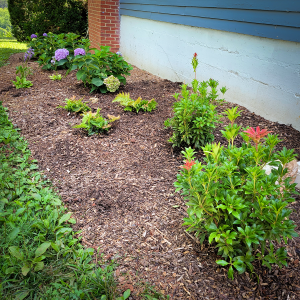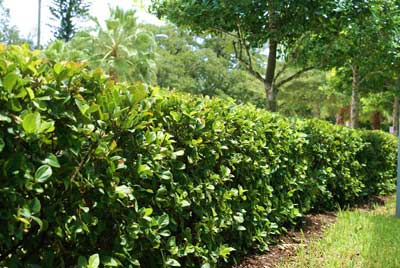 After the initial pruning at planting, hedges need to be pruned often. Once the hedge reaches the desired height, prune new growth back whenever it grows another 6 to 8 inches. Prune to within 2 inches of the last pruning. Hedges may be pruned twice a year, in spring and again in mid-summer, to keep them dense and attractive. Prune hedges so they’re wider at the base than at the top, to allow all parts to receive sunlight and prevent legginess.
After the initial pruning at planting, hedges need to be pruned often. Once the hedge reaches the desired height, prune new growth back whenever it grows another 6 to 8 inches. Prune to within 2 inches of the last pruning. Hedges may be pruned twice a year, in spring and again in mid-summer, to keep them dense and attractive. Prune hedges so they’re wider at the base than at the top, to allow all parts to receive sunlight and prevent legginess.
Renewal pruning for older or overgrown shrubs
Every year remove up to one-third of the oldest, thickest stems or trunks, taking them right down to the ground. This will encourage the growth of new stems from the roots. Once there are no longer any thick, overgrown trunks left, switch to standard pruning as needed.
Rejuvenation pruning for older or overgrown shrubs
Deciduous shrubs that have multiple stems (aka, cane-growth habit), and that have become very overgrown or neglected can be rejuvenated by cutting all canes back as close to the ground as possible in early spring. That season’s flowers may be sacrificed but the 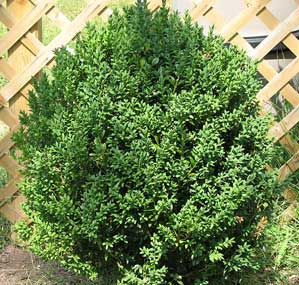 benefits from bringing the plants back to their normal size and shape outweigh this temporary “collateral damage.” This pruning technique works best for shrubs such as overgrown spirea, forsythia, cane-growth viburnums, honeysuckle and any other multiple stemmed shrubs that are otherwise healthy. Within one growing season, these shrubs will look like new plantings, full and natural shaped.
benefits from bringing the plants back to their normal size and shape outweigh this temporary “collateral damage.” This pruning technique works best for shrubs such as overgrown spirea, forsythia, cane-growth viburnums, honeysuckle and any other multiple stemmed shrubs that are otherwise healthy. Within one growing season, these shrubs will look like new plantings, full and natural shaped.
Pruning evergreens
With few exceptions, evergreens (conifers) require little pruning. Different types of evergreens should be pruned according to their varied growth habits.
- Spruces, firs and douglas-firs don’t grow continuously, but can be pruned any time because they have lateral (side) buds that will sprout if the terminal (tip) buds are removed. It’s probably best to prune them in late winter, before growth begins. Some spring pruning, however, is not harmful.
- Pines only put on a single flush of tip growth each spring and then stop growing. Prune before these “candles” of new needles become mature. Pines do not have lateral buds, so removing terminal buds will take away new growing points for that branch. Eventually, this will leave dead stubs. Pines seldom need pruning, but if you want to promote more dense growth, remove up to two-thirds of the length of newly expanded candles. Don’t prune further back than the current year’s growth.
- Arborvitae, junipers, yews, and hemlocks grow continuously throughout the growing season. They can be pruned any time through the middle of summer. Even though these plants will tolerate heavy shearing, their natural form is usually most desirable, so prune only to correct growth defects.
To learn more about the best time to prune shrubs download the Shrub Pruning Calendar courtesy of the Virginia Cooperative Extension. (pdf)
At Dos Amigos Landscaping we have the expertise to prune your trees and shrubs properly for maximum health and beauty of your trees, shrubs and landscaping. Right now (January to March) is the best time to prune most deciduous trees in Virginia. Contact us today we’ll come to your property, make an assessment and give you an estimate for pruning. Call Daniel Martin at 434-465-0075 to schedule an appointment or send an email.
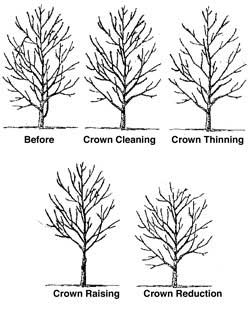
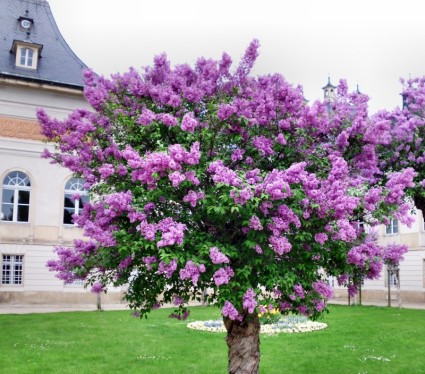
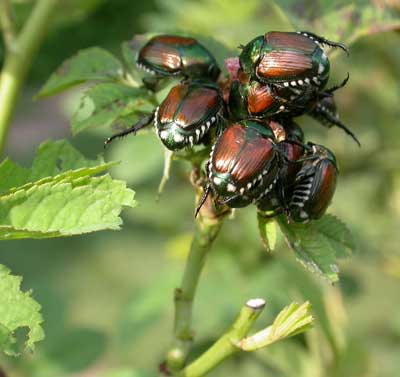
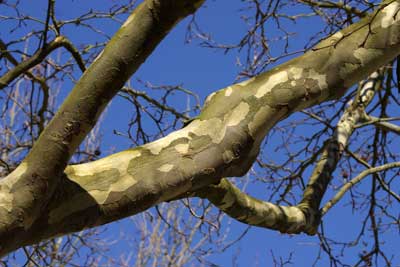 Pruning is the most common tree maintenance procedure. Although forest trees grow quite well with only nature’s pruning, landscape trees require a higher level of care to maintain their safety and aesthetics. Pruning should be done with an understanding of how the tree responds to each cut. Improper pruning can cause damage that will last for the life of the tree, or worse, shorten the tree’s life. Proper pruning, with an understanding of tree biology, can maintain good tree health and structure while enhancing the aesthetic and economic values of your landscape.
Pruning is the most common tree maintenance procedure. Although forest trees grow quite well with only nature’s pruning, landscape trees require a higher level of care to maintain their safety and aesthetics. Pruning should be done with an understanding of how the tree responds to each cut. Improper pruning can cause damage that will last for the life of the tree, or worse, shorten the tree’s life. Proper pruning, with an understanding of tree biology, can maintain good tree health and structure while enhancing the aesthetic and economic values of your landscape.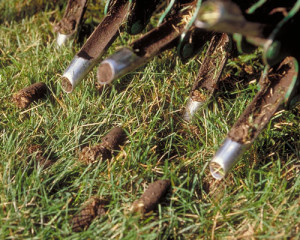
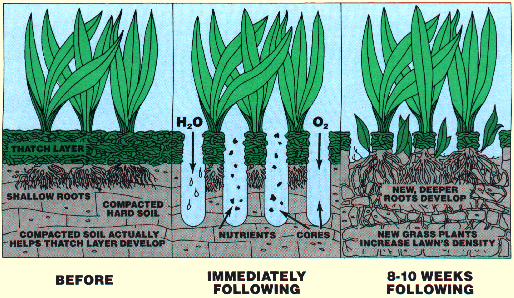 • Aerating holes help to absorb water. Rather than water having to start penetrating from the surface, it can start penetrating from one to 2 ½ inches below the surface. Not only will the holes made by the aerator hold the water, but they will also help the water to sink 2 – 4 inches deeper into the soil.
• Aerating holes help to absorb water. Rather than water having to start penetrating from the surface, it can start penetrating from one to 2 ½ inches below the surface. Not only will the holes made by the aerator hold the water, but they will also help the water to sink 2 – 4 inches deeper into the soil.

